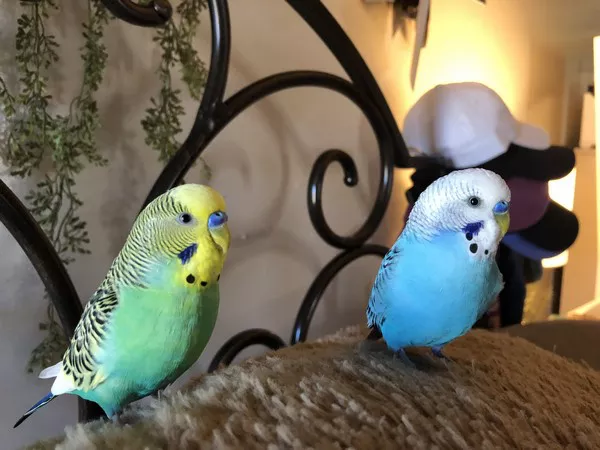In the world of feline companions, Burmese cats stand out not only for their sleek, shiny coats and distinctive looks but also for their hefty price tag. If you’ve ever wondered, “Why are Burmese cats expensive?” you’re not alone. In this article, we will delve into the various factors contributing to the high cost of these enigmatic felines, shedding light on the reasons behind their premium price.
1. Rarity and Demand
One of the primary factors driving up the price of Burmese cats is their rarity. These elegant felines are not as common as some other breeds, contributing to their exclusivity. The high demand for these cats further amplifies their scarcity, resulting in breeders being able to command a premium for Burmese kittens.
See Also:How many kinds of burmese cat are there?
2. Selective Breeding Practices
Burmese cats are known for their distinct appearance and gentle temperament, qualities that are carefully maintained through selective breeding. Responsible breeders invest time and resources in selecting breeding pairs that meet the breed standards, ensuring the continuation of desirable traits. This meticulous breeding process involves genetic testing and screening, contributing to the overall cost of producing healthy and well-tempered Burmese cats.
3. Health Screening and Veterinary Care
Maintaining the health and well-being of Burmese cats involves thorough health screening and regular veterinary care. Responsible breeders prioritize the health of their breeding cats, conducting tests for genetic disorders and providing necessary vaccinations. The cost of veterinary care, including preventive measures and emergency situations, contributes to the overall expense of breeding and raising Burmese kittens.
4. Quality Nutrition and Care
Burmese cats require a balanced and high-quality diet to ensure their optimal health and vitality. Breeders invest in premium cat food and supplements, contributing to the overall cost of raising healthy and happy kittens. Additionally, the general care, grooming, and socialization efforts put into each kitten play a significant role in their overall well-being and, consequently, the price of acquiring a Burmese cat.
5. Exclusive Bloodlines
Maintaining the purity of Burmese cat bloodlines is crucial for preserving the breed’s unique characteristics. Breeders often invest in obtaining and maintaining exclusive bloodlines, which can involve collaborations with other breeders and importing cats from different regions. These efforts contribute to the exclusivity of the Burmese breed, thereby affecting the price of acquiring a cat with a distinguished lineage.
6. Show-Quality Standards
Burmese cats often conform to specific show-quality standards set by cat breed associations. Meeting these standards requires careful breeding and adherence to strict criteria related to coat color, pattern, eye color, and overall conformation. Cats that meet these high standards are deemed show-quality, commanding a higher price due to their adherence to the breed’s ideal characteristics.
7. Ethical Breeding Practices
Responsible breeders prioritize the ethical treatment and well-being of their cats. This includes providing spacious and comfortable living conditions, regular veterinary check-ups, and ample socialization opportunities. These ethical practices contribute to the overall cost of breeding and raising Burmese cats, as breeders invest in creating a positive and nurturing environment for their feline companions.
8. Time and Effort Invested
Breeding Burmese cats is a time-intensive process that requires dedication, patience, and expertise. From the planning of litters to the care of pregnant queens, the birthing process, and the raising of kittens, breeders invest a significant amount of time and effort into each cat’s life cycle. This commitment to ensuring the well-being of every cat contributes to the higher cost associated with Burmese kittens.
9. Transportation and Import Costs
In some cases, breeders may need to transport cats over long distances or even import them from other regions or countries to diversify bloodlines. The associated costs of transportation, import fees, and legal requirements can add a substantial amount to the overall expenses incurred by breeders, influencing the final price of Burmese cats.
10. Limited Breeding Window
Burmese cats have a limited breeding window due to factors such as age and health considerations. Female cats may only be able to produce a certain number of litters during their breeding years, further limiting the availability of Burmese kittens. This scarcity contributes to the higher demand and subsequently elevated prices for these unique feline companions.
In conclusion, the elevated cost of Burmese cats is a result of a combination of factors, including their rarity, selective breeding practices, health screening, exclusive bloodlines, adherence to show-quality standards, ethical breeding practices, time and effort invested, transportation and import costs, and the limited breeding window. Understanding these aspects provides insight into the value associated with these enigmatic felines, emphasizing the importance of responsible breeding and the commitment required to ensure the well-being of Burmese cats.
Related Topics:
What is a blue point burmese cat?
Do burmese cat eyes change color?
How much should you feed a burmese cat?
























